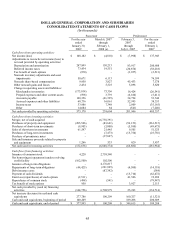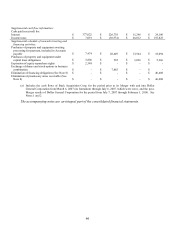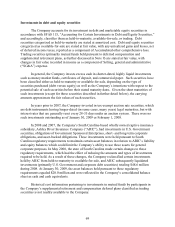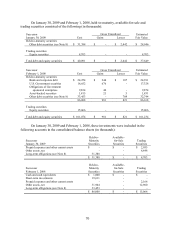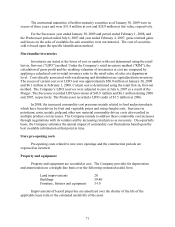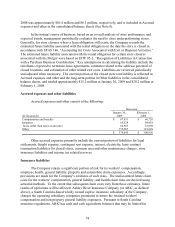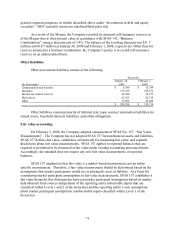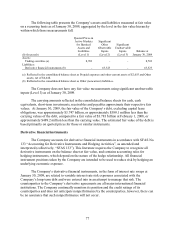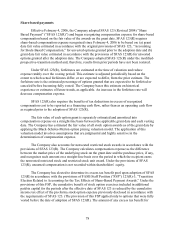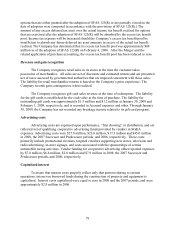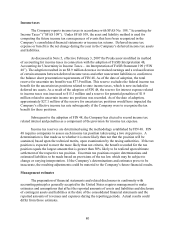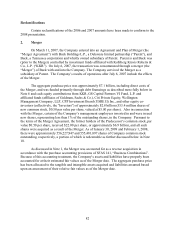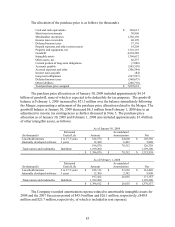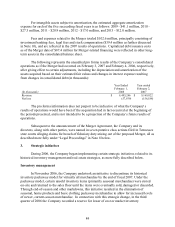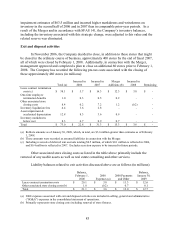Dollar General 2008 Annual Report Download - page 77
Download and view the complete annual report
Please find page 77 of the 2008 Dollar General annual report below. You can navigate through the pages in the report by either clicking on the pages listed below, or by using the keyword search tool below to find specific information within the annual report.
75
general corporate purposes, as further described above under “Investments in debt and equity
securities.” ARIC currently insures no unrelated third-party risk.
As a result of the Merger, the Company recorded its assumed self-insurance reserves as
of the Merger date at their present value in accordance with SFAS 141, “Business
Combinations”, using a discount rate of 5.4%. The balance of the resulting discount was $11.7
million and $18.7 million at January 30, 2009 and February 1, 2008, respectively. Other than for
reserves assumed in a business combination, the Company’ s policy is to record self-insurance
reserves on an undiscounted basis.
Other liabilities
Other non-current liabilities consist of the following:
Successor
(In thousands)
January 30,
2009
February 1,
2008
Compensation and benefits
$
8,399
$
13,744
Insurance
139,410
123,276
Income tax related reserves
44,990
78,277
Derivatives
63,523
82,319
Other
32,966
22,098
$
289,288
$
319,714
Other liabilities consist primarily of deferred rent, lease contract termination liabilities for
closed stores, leasehold interests liabilities, and rebate obligations.
Fair value accounting
On February 2, 2008, the Company adopted components of SFAS No. 157, “Fair Value
Measurements”. The Company has not adopted SFAS 157 for nonfinancial assets and liabilities.
SFAS 157 defines fair value, establishes a framework for measuring fair value, and expands
disclosures about fair value measurements. SFAS 157 applies to reported balances that are
required or permitted to be measured at fair value under existing accounting pronouncements.
Accordingly, the standard does not require any new fair value measurements of reported
balances.
SFAS 157 emphasizes that fair value is a market-based measurement, not an entity-
specific measurement. Therefore, a fair value measurement should be determined based on the
assumptions that market participants would use in pricing the asset or liability. As a basis for
considering market participant assumptions in fair value measurements, SFAS 157 establishes a
fair value hierarchy that distinguishes between market participant assumptions based on market
data obtained from sources independent of the reporting entity (observable inputs that are
classified within Levels 1 and 2 of the hierarchy) and the reporting entity’ s own assumptions
about market participant assumptions (unobservable inputs classified within Level 3 of the
hierarchy).


